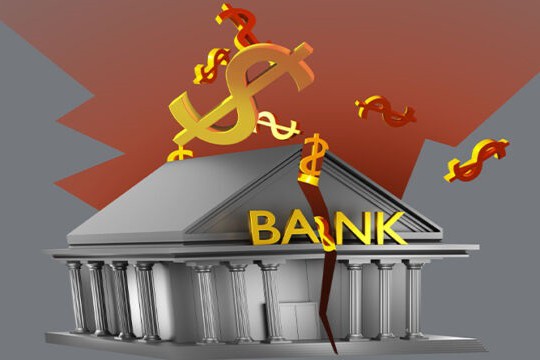Pic.: Daily Reckoning
I’m sure you recall the banking crisis of March to May 2023. It began with the collapse of the little-known Silvergate Bank on March 8. This was followed the next day by the collapse of the much larger Silicon Valley Bank (SVB) on March 9. SVB had over $120 billion in uninsured deposits, writes James G. Rickards, an American lawyer, economist, and investment banker with 40 years of experience working in capital markets on Wall Street, the editor of Strategic Intelligence.
After five bank failures in two months and a trillion-dollar bailout by the government, the crisis seemed over. But that was false comfort. I wrote at the time that the crisis wasn’t over, that it was just halftime.
Investors are relaxed because they believe the banking crisis is over. That’s a huge mistake. History shows that major financial crises unfold in stages and have a quiet period between the initial stage and the critical stage.
The average duration of these financial crises is about 20 months. This new crisis began 15 months ago. It could have five more months to run, if not longer.
On the other hand, this crisis could reach the acute stage faster. That’s because of technology that makes a bank run move at the speed of light. With an iPhone you can initiate a $1 billion wire transfer from a failing bank while you’re waiting in line at McDonald’s. No need to line up around the block in the rain waiting your turn.
In other words, the second stage of the crisis could erupt in even more dramatic fashion sooner than later. This slow-motion crisis can become a real-time crisis very quickly.
This could be the crisis where the panic moves from the banks to the dollar itself. If savers lose confidence in the Fed (we’re almost there) not only will the banks collapse, but the dollar will collapse also. At that point, the only solution is gold bullion.
It’s also important to distinguish between individual bank failures and a systemic banking crisis. When individual banks fail, the depositors and creditors are usually protected but stockholders can get wiped out.
In a systemic banking crisis, the contagion goes from bank to bank quickly, and the entire system has to be rescued with some combination of blanket deposit guarantees and unlimited QE.
In the worst case, you either have to shut the banks (which FDR did in 1933) or nationalize them which some countries have done from time to time.
Well, it seems that the quiet period is over and we are entering Stage II of the banking meltdown.
According to the latest data from the FDIC, many banks could be at risk of failure as unrealized losses reached $517 billion in the first quarter of 2024, up from $478 billion in the last quarter of 2023. 40 banks with over $1 billion in assets have already reported unrealized losses higher than 50% of their equity capital. Over 200 smaller banks with lesser assets have issued the same reports.
The bottom line is Stage II of the crisis is here, and the effects will be devastating to financial institutions and the stock market as a whole.
read more in our Telegram-channel https://t.me/The_International_Affairs

 11:28 17.06.2024 •
11:28 17.06.2024 •























